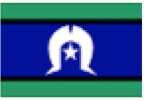SSRV staff regularly engage with clients who are experiencing a multiple, inter-connected and compounding difficulties. That is why we created the Integrated Service Project, where SSRV’s community lawyers and in-house financial counsellor work together to improve client outcomes.
Recently, team members Graeme Parsons (financial counsellor) and Eloise Cox (community lawyer) sat down to give us an insight into their important work.
1. What led you to a career in social security rights work?
Graeme: I’m a financial counsellor with a generalist background, and I hadn’t thought about a specialist role, but was aware of Social Security Rights Victoria and intrigued by the Integrated Services Project. As practitioners, we are frequently drawn into the orbit of other services and often tempted to get involved.
Eloise: I always wanted to use my law degree to help disadvantaged people achieve positive outcomes to their lives and to their community. I have volunteered at community legal centres and worked previously as a community lawyer in family violence, tenancy and employment law. SSRV has a vision for a fair and just society in which all people receive guaranteed adequate income in order to enjoy a decent standard of living, and this is a vision that I share.
2. Describe the area you work in
Graeme: My role tends to focus on how we can best support a client who has already engaged with SSRV. This might be in supporting a claim for review or appeal, requesting practical assistance from Centrelink in information or in repayments, as well as in simply reviewing how they are placed beyond the scope of their Centrelink issue. There is also an opportunity to look at the broader scope of a client’s circumstances and provide guidance about how to create a sustainable life.
Eloise: The objective of the ISP project is to design, implement and evaluate a service that brings together social security law experts and financial counsellors to provide a holistic service to clients. I work closely with the financial counsellor at SSRV, Graeme Parsons, and I often work with other financial counsellors who work externally to SSRV. This cross-discipline approach is unique and allows our service to achieve better outcomes for clients.
3. What is a positive change you’ve seen occur recently?
Graeme: The community lawyers in our team see professional development in other disciplines as a special opportunity to inform and extend knowledge. We see the value of client experiences in fleshing out the law and providing and understanding of the real-life impacts and applications. Knowing that this then prompts a fresh awareness of our service, and use of the Worker Help Line service ensures that both services build their abilities to perform their roles to best effect.
Eloise: I think there is a greater focus on integrated service delivery across the community legal sector at large. It is more common now for all practitioners to consider what referrals both internal to their organisation and external may be appropriate, and how they can assist the client holistically.
4. What do you feel is the biggest challenge facing your work right now?
Graeme: The nature of client engagement with Services Australia remains one largely characterised by confrontation, where the complexities and vulnerabilities of clients are too often ignored or understated. This is a contrast to relations between many commercial creditors and financial counsellors, where such challenges are acknowledged and parties are more able to find their way towards fair solutions.
Eloise: A current challenge is our ability to effectively communicate with Centrelink when we are advocating for our clients. Clients often report that they are unable to reach Centrelink over the phone at practical times in the day, that they find speaking to Centrelink exacerbates their stress or mental health conditions, or that they are unclear about what to discuss with Centrelink.
I believe establishing a phone line that is specifically for advocates to use for vulnerable clients will be of great benefit to both our clients and Services Australia as it can assist to clarify the issues in contention and achieve more streamlined outcomes, which in turn helps to avoid lengthy and protracted dealings with Centrelink.
5. What’s one important piece of information you would like to share
Eloise: One thing to always remember is that if a client receives a decision from Centrelink to cancel, suspend, reject or otherwise change their payment, they have 13 weeks to seek a review in order to preserve their right to backpay.
If they are outside of this 13-week period they can still lodge a review, however they will only be able to claim back payment from the date they lodged their application for review and not the date that Centrelink made the original decision.
The SSRV Worker Helpline offers free specialist information on social security law and Centrelink to workers, including financial counsellors. You can call the worker helpline on 0419 793 652 for support when you are working with a client, or to enquiry about making a referral.
This article first appeared in the November 2023 issue of Devil’s Advocate, the magazine of Financial Counselling Victoria, and has been reproduced with permission.




